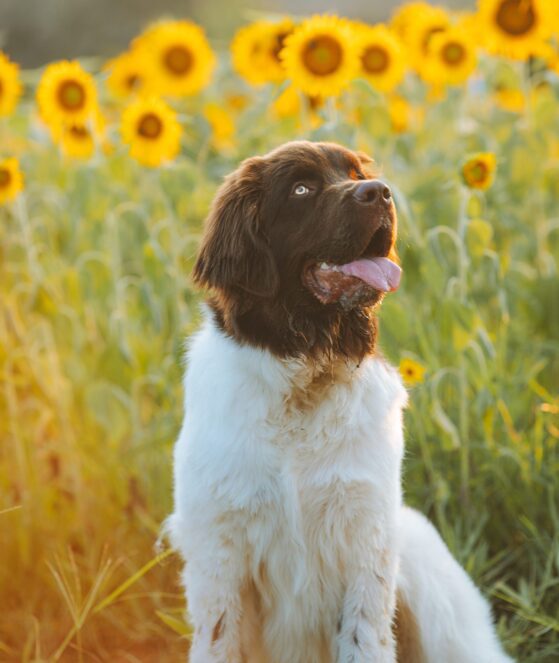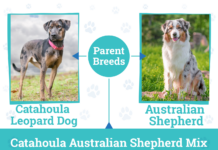
Last Updated on January 15, 2024 by Dogs Vets
Newfoundland Dog Size Comparison
The Newfoundland dog, often referred to as the “Gentle Giant,” is a breed known for its impressive size and strength. Originating from the Newfoundland region of Canada, these dogs were bred to assist fishermen in their work.
With their webbed feet and thick, water-resistant coats, they excelled at tasks such as hauling nets, retrieving items from the water, and even rescuing drowning individuals.
The exact origins of the Newfoundland dog are somewhat unclear, but it is believed that they are descendants of indigenous working dogs brought to Newfoundland by European fishermen in the 16th century.
These dogs were then crossbred with larger breeds, such as the Great Pyrenees and the Mastiff, resulting in the development of the Newfoundland breed we know today.
Size and Physical Characteristics
When it comes to size, the Newfoundland dog is undoubtedly one of the largest breeds out there. Adult males typically weigh between 130 to 150 pounds (59 to 68 kilograms), while females weigh slightly less at 100 to 120 pounds (45 to 54 kilograms).
Standing at the shoulder, these dogs can reach heights of 26 to 28 inches (66 to 71 centimeters).
One of the distinctive features of the Newfoundland dog is its massive head, which is broad and square-shaped. Their eyes are usually dark and expressive, reflecting their gentle and kind nature. Their ears are set high on the head and are relatively small in proportion to their overall size.
The Newfoundland’s coat is thick, dense, and water-resistant, consisting of a soft undercoat and a longer, coarser outer coat. The coat comes in various colors, including black, brown, gray, and Landseer (white with black markings).
Comparing Newfoundland Size to Other Breeds
While the Newfoundland dog is undeniably large, there are other breeds that also boast impressive size. Let’s take a look at some of these breeds and see how they measure up:
1. Saint Bernard
The Saint Bernard is another breed renowned for its size and strength. These dogs were originally bred to work as rescue dogs in the Swiss Alps.
Adult males can weigh between 140 to 180 pounds (64 to 82 kilograms), and females typically weigh between 120 to 140 pounds (54 to 64 kilograms). They stand at a similar height to Newfoundland dogs, ranging from 25.5 to 27.5 inches (65 to 70 centimeters).
2. Great Dane
The Great Dane is often referred to as the “Apollo of Dogs” due to its majestic appearance. These dogs are known for their tall and lean build.
Adult males can weigh between 140 to 175 pounds (64 to 79 kilograms), while females weigh slightly less at 110 to 140 pounds (50 to 64 kilograms). Great Danes can stand at heights ranging from 28 to 32 inches (71 to 81 centimeters).
3. English Mastiff
The English Mastiff is one of the heaviest dog breeds in the world. Adult males can weigh between 160 to 230 pounds (73 to 104 kilograms), and females typically weigh between 120 to 170 pounds (54 to 77 kilograms). In terms of height, they can reach 27.5 to 30 inches (70 to 76 centimeters).
4. Irish Wolfhound
The Irish Wolfhound is a breed known for its impressive stature and gentle nature. Adult males can weigh between 140 to 180 pounds (64 to 82 kilograms), and females typically weigh between 115 to 140 pounds (52 to 64 kilograms). They stand at heights ranging from 30 to 32 inches (76 to 81 centimeters).
Conclusion
When it comes to size, the Newfoundland dog is undoubtedly one of the largest breeds. However, there are other breeds, such as the Saint Bernard, Great Dane, English Mastiff, and Irish Wolfhound, that also boast impressive size and strength. These breeds have their own unique characteristics and histories.
Whether you’re in awe of the Newfoundland’s gentle nature or fascinated by the sheer size of these breeds, it’s clear that they leave a lasting impression.
Owning one of these magnificent dogs requires dedication, as their size comes with certain care and exercise requirements. However, the love and companionship they provide make it all worthwhile.
So, if you’re considering adding a large breed to your family, be prepared for a lot of love, slobbery kisses, and the occasional challenge of finding a big enough bed for your furry friend!
Fact Check
We strive to provide the latest valuable information for pet lovers with accuracy and fairness. If you would like to add to this post or advertise with us, don’t hesitate reach us. If you see something that doesn’t look right, contact us!
















